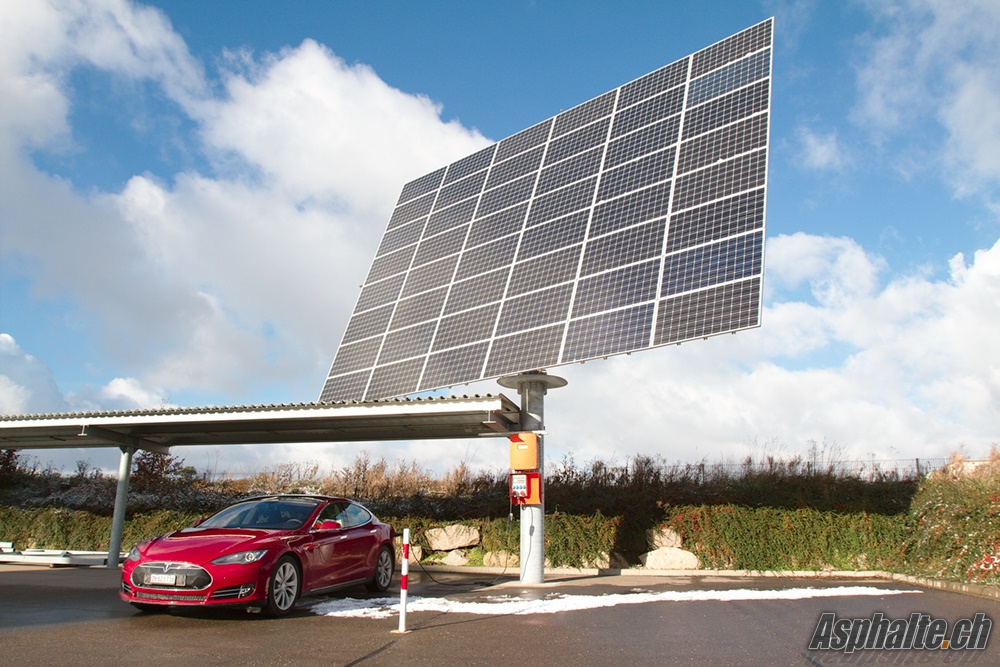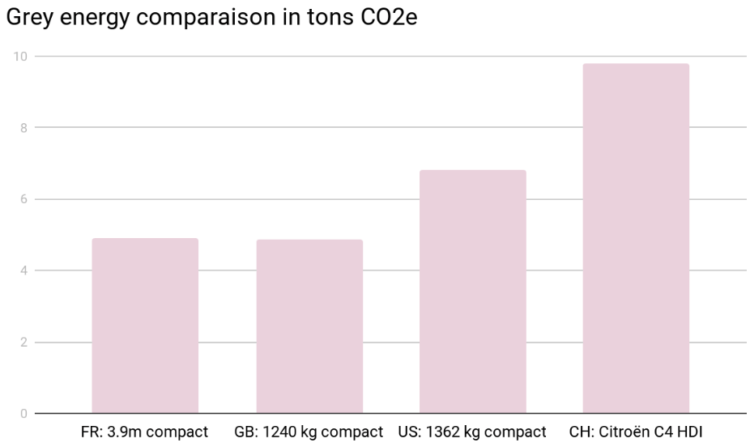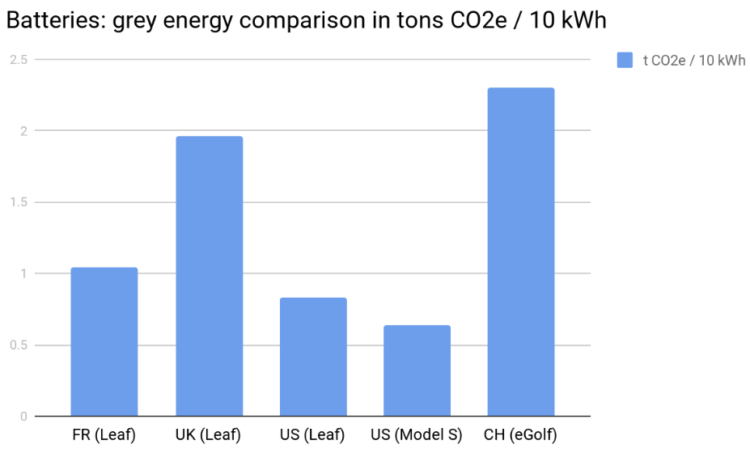Climate change & EVs: inconvenient numbers ?
A few assumptions stand out from some of the other studies:
– real mileage values are used, not normalized NEDC values which are notoriously optimistic
– electricity production estimated at 182 g/kWh CO2e based on the consumption mix in Switzerland, including energy imports
– hybrids being driven in electric mode for 35% of distances
– a car lifecycle of 150’000 km, but with half of Lithium Ion battery packs requiring a replacement at 100’000 km.
These factors amplify the footprint estimate of all internal combustion cars: with 32 to 40 tons of CO2e, compact diesel cars are estimated 1.5 to 2x higher than in the french study. The swiss study also reaches a strikingly higher manufacturing footprint than the three other papers.
The differences are striking but, in absolute terms, energy supply during the driving phase remains the dominant factor.
So ? Are EVs cleaner ?
All studies point to similar conclusions: the climate footprint of battery electric compact cars (Nissan Leaf 24 kWh, VW eGolf 33.4 kWh) is significantly smaller than their internal combustion engine counterparts. There is however a significant nuance: smaller does not mean null. From a climate change standpoint, BEVs pollute twice less at best.
The factor that can offset dramatically the equation is the eletricity production footprint, which can sharply vary based on geography: there is a 10x factor between nuclear electricity (France) and territories with fossile power generation (Germany, US midwest).
Battery pack capacity, which can quadruple between a 24 kWh first generation Nissan Leaf and a Tesla Model S 100D is also a significant factor, and the estimates for grey energy vary a lot between studies:
The assumptions underlying the footprint of the Model S batteries as computed by the US look particularly optimistic, especially given the fact that cell production is located in Japan (554 g CO2/kWh in 2016).










